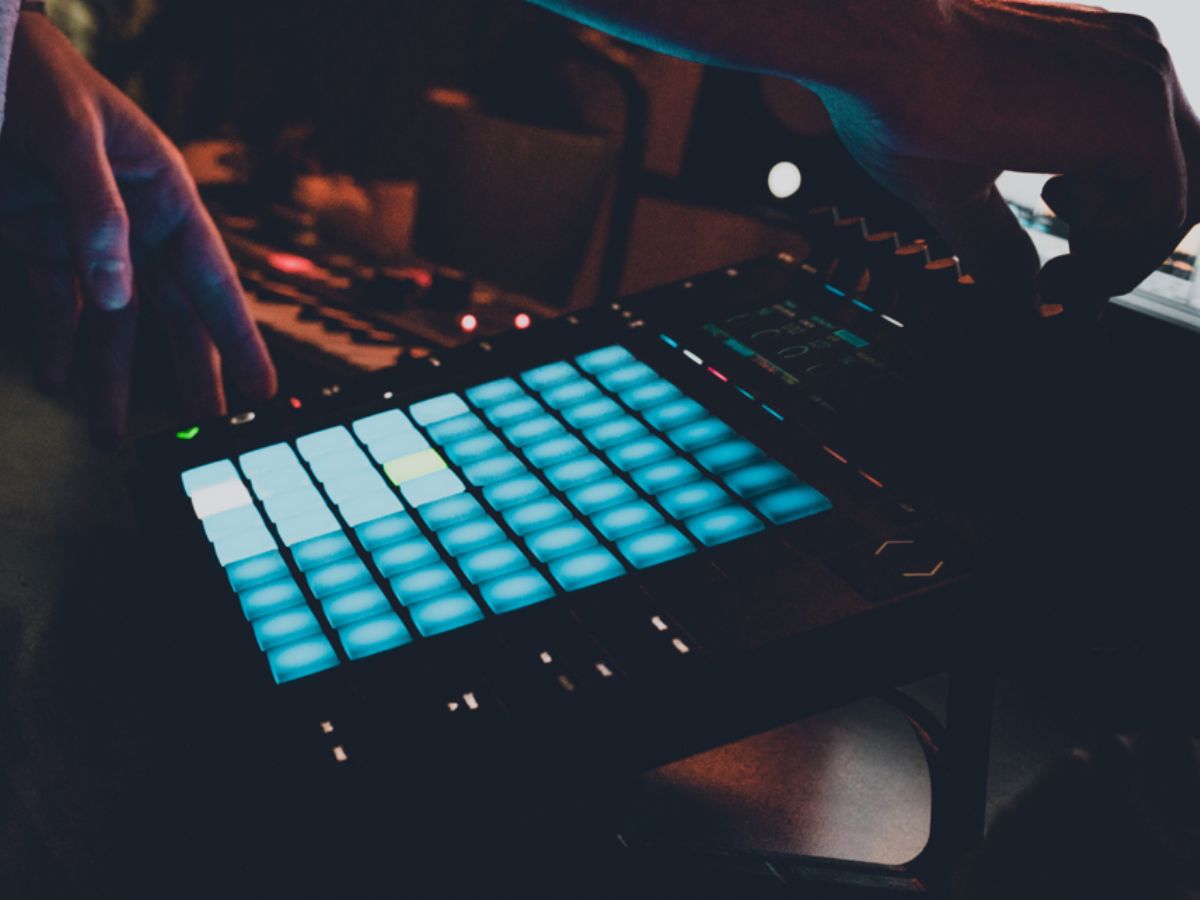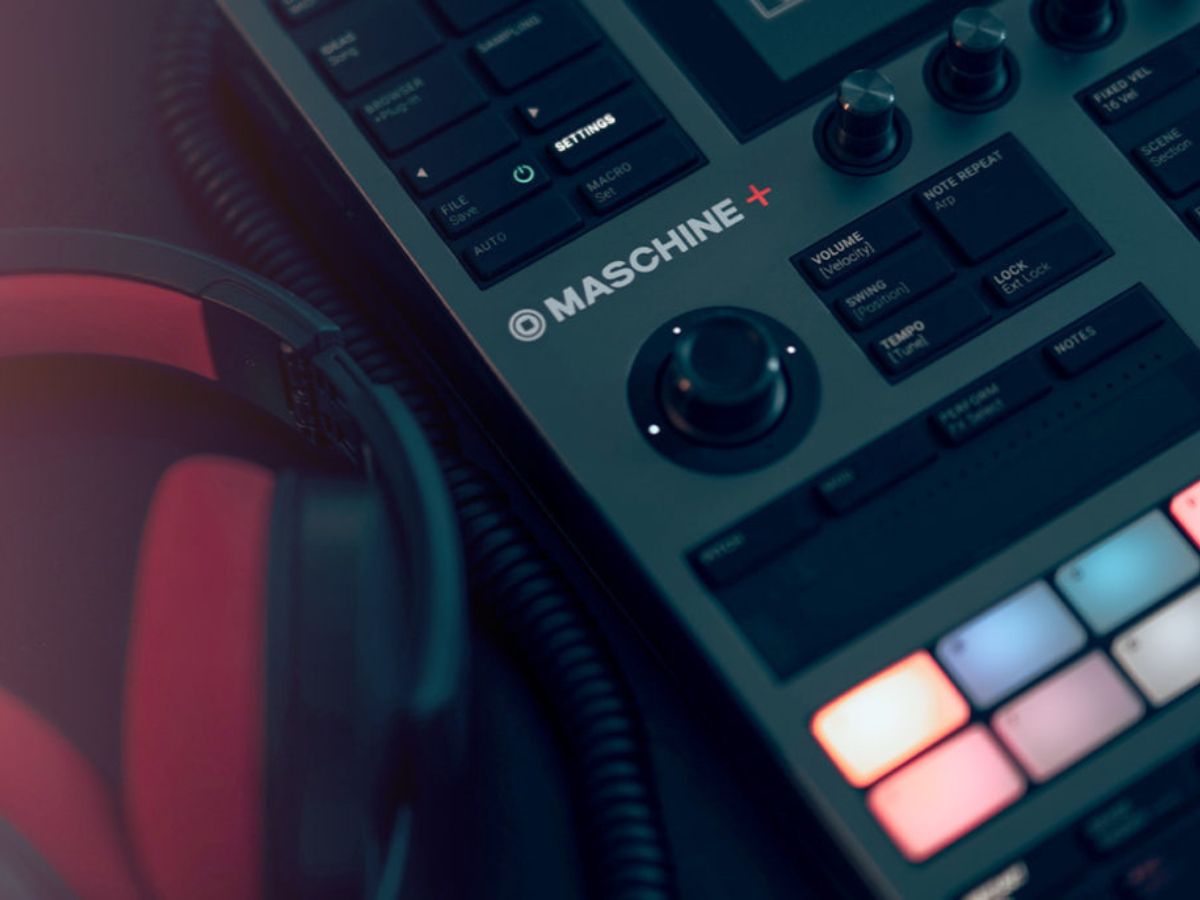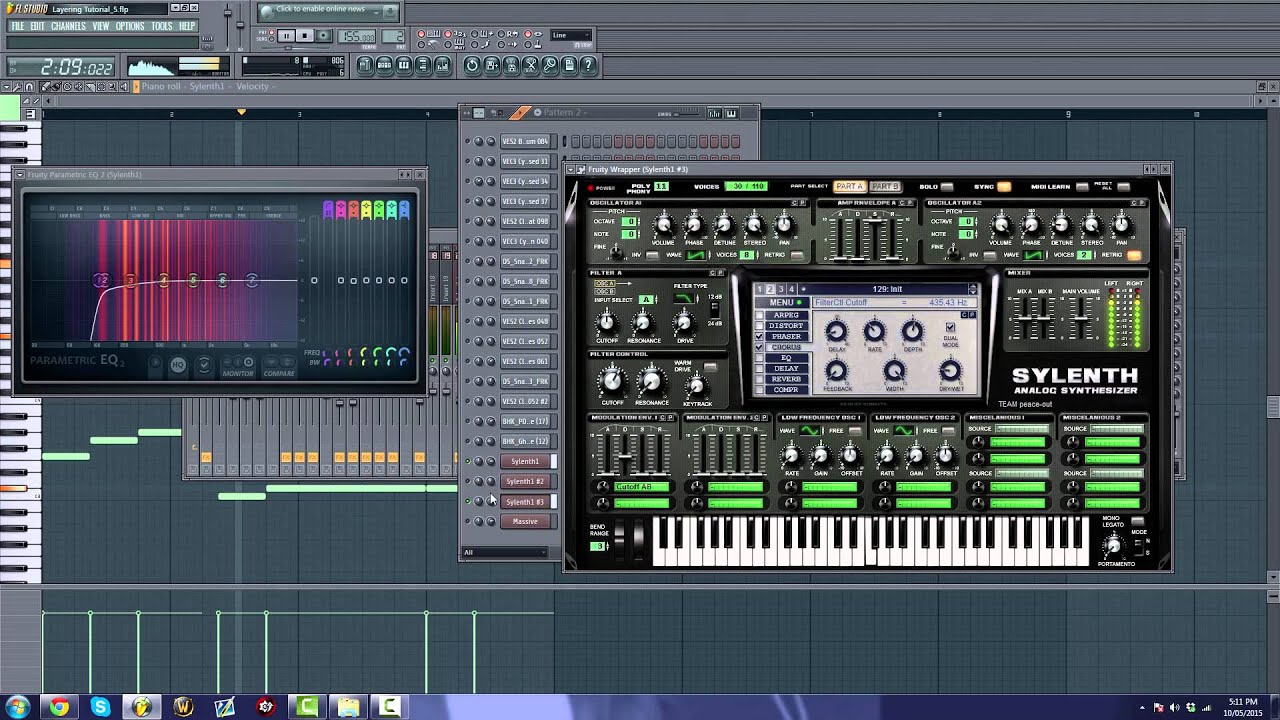

Hip Hop
How To Make Hip Hop Bass Fl Studio
Modified: February 20, 2024
Learn how to create powerful and catchy Hip Hop basslines in FL Studio. Take your beats to the next level with this step-by-step guide.
(Many of the links in this article redirect to a specific reviewed product. Your purchase of these products through affiliate links helps to generate commission for AudioLover.com, at no extra cost. Learn more)
Table of Contents
Introduction
Hip Hop music has been an integral part of popular culture for decades, captivating audiences with its energetic beats, powerful lyrics, and distinctive basslines. The bassline is a crucial element in Hip Hop, providing the foundation and groove that make the genre so infectious.
Creating a captivating Hip Hop bassline requires a combination of technical know-how and artistic flair. From choosing the right samples to applying effects and mixing techniques, there are several steps to master in order to achieve that deep and powerful low-end.
In this article, we will delve into the world of Hip Hop bass and explore how to make a killer bassline using FL Studio, one of the most popular digital audio workstations (DAWs) among producers. Whether you’re a beginner looking to learn the basics or an experienced producer seeking new techniques, this guide will help you unlock the secrets to creating a captivating Hip Hop bassline.
Before we dive into the step-by-step process, it’s important to note that while technical proficiency is essential, there is also room for experimentation and personal style. Don’t be afraid to think outside the box and let your creativity shine through. Now, let’s get started and learn how to make a Hip Hop bassline that will make heads nod and speakers thump!
Step 1: Setting up your project
Before you begin creating your Hip Hop bassline in FL Studio, it’s important to set up your project properly. This will ensure that you have the right environment and tools to create a professional-sounding bassline.
Here are a few key steps to follow:
- Choose the right tempo and time signature: Hip Hop typically ranges from 80 to 100 beats per minute (BPM), but feel free to experiment and find a tempo that suits your style. Additionally, select the appropriate time signature, usually 4/4, as this is the most common in Hip Hop music.
- Set up your MIDI controller: If you have a MIDI controller, connect it to your computer and configure it to work with FL Studio. This will allow you to play and record basslines in a more intuitive manner.
- Create a new pattern: In FL Studio, patterns are used to organize different sections of your music. Create a new pattern specifically for your bassline. You can do this by right-clicking in the Pattern Selector and selecting “Insert > Empty.” Give your pattern a meaningful name to easily identify it later.
- Choose a suitable instrument: FL Studio offers a wide range of bass instruments to choose from. Experiment with different bass synths, samplers, or even real bass guitar recordings to find the sound that fits your vision.
- Set up your mixer channels: It’s important to assign your bass instrument to a dedicated mixer channel. This will allow you to apply effects, adjust volume levels, and perform other mixing tasks later on. Right-click on an empty mixer channel, select “Insert,” and choose the appropriate plugin for your bass instrument.
By following these steps, you’ll have a solid foundation for creating your Hip Hop bassline. With your project set up correctly, you can now move on to the next step: choosing the right samples.
Step 2: Choosing the right samples
When it comes to creating a powerful and impactful Hip Hop bassline, choosing the right samples is essential. Samples are pre-recorded sounds or music snippets that can be used to add character and texture to your bassline.
Here are some tips for selecting the perfect samples for your Hip Hop bassline:
- Explore sample libraries: There are countless sample libraries available online that cater specifically to Hip Hop music. Take the time to browse through these libraries and listen to different bass samples. Look for samples that have a clean and punchy sound with plenty of low-end frequencies.
- Consider live recordings: If you have access to a bass guitar or know someone who does, consider recording your own bass samples. Live recordings can add a unique and organic feel to your bassline, giving it a more authentic sound.
- Experiment with different tones: Hip Hop basslines come in various sonic styles, ranging from deep and booming to gritty and distorted. Don’t be afraid to experiment with different tones and textures to find the one that best suits your track.
- Layer your samples: Layering multiple bass samples can add depth and complexity to your bassline. Try combining samples with different characteristics, such as a clean and punchy sample with a distorted and gritty one, to create a unique and powerful sound.
- Pay attention to the key and tuning: Ensure that your bass samples are in the correct key and are properly tuned. This will ensure that they blend harmoniously with the other elements of your track.
Remember, selecting the right samples for your Hip Hop bassline is subjective and will largely depend on your personal taste and the specific vibe you want to create. Take the time to experiment and trust your ears. Once you have chosen the perfect samples, you’re ready to move on to the next step: layering your bassline.
Step 3: Layering your bassline
Layering is a powerful technique that can bring richness and depth to your Hip Hop bassline. By combining multiple bass sounds, you can create a unique and powerful sonic character that stands out in your mix.
Here’s how you can layer your bassline effectively:
- Choose complementary bass sounds: Select two or more bass sounds that complement each other and add different characteristics to your overall sound. For example, you might choose a deep sub-bass sound for the low-end foundation and layer it with a mid-range bass sound for added texture and presence.
- Blend the layers: Adjust the volume levels and EQ settings of each bass layer to ensure they blend together smoothly. Use EQ to carve out space for each layer in the frequency spectrum, making sure they don’t clash with other elements of your mix.
- Experiment with panning and stereo imaging: Try panning different layers of your bassline to create a wider stereo image. This can add dimension and width to your sound, making it more interesting and immersive. Be careful not to overdo it, as too much width can lead to a cluttered mix.
- Apply different processing to each layer: To further enhance the sonic character of each bass layer, apply different processing techniques such as saturation, distortion, or modulation effects. This can help differentiate the layers and add more depth and character to your bassline.
- Add variation and movement: To make your bassline more engaging and dynamic, consider introducing subtle variations and movement. This can be achieved by automating parameters such as filter cutoff, modulation depth, or pitch modulation. Experiment with these techniques to add interest and make your bassline stand out.
Layering your bassline requires careful attention to detail and a good set of ears. Don’t be afraid to experiment and trust your instincts when it comes to selecting and blending different bass sounds. Once you have layered your bassline to your satisfaction, it’s time to move on to the next step: creating sub-bass tones.
Step 4: Creating sub-bass tones
In Hip Hop music, the sub-bass is a crucial component that provides depth, power, and impact to your bassline. The sub-bass refers to the very low frequencies that are felt rather than heard, adding weight and rumble to your track. Creating a solid sub-bass tone is essential for a truly impactful Hip Hop bassline.
Here are some techniques to help you create powerful sub-bass tones:
- Use a sine wave: Start by selecting a pure sine wave oscillator as the foundation of your sub-bass tone. The sine wave produces a clean and smooth low-frequency tone that is ideal for sub-bass.
- Emphasize the low-end frequencies: Boost the low frequencies in your sub-bass using an equalizer, focusing on the sub-bass range around 30Hz to 60Hz. Be careful not to overdo it, as excessive boosting can result in a muddy and boomy sound.
- Sculpt the sound with envelope shaping: Use an envelope generator to shape the amplitude of your sub-bass tone. Adjust the attack and release settings to control how quickly the sound rises and falls. This can help create a punchy and well-defined sub-bass tone.
- Layer the sub-bass with harmonics: To add richness and complexity to your sub-bass, consider layering it with higher harmonics. You can achieve this by blending in a low-pass filtered sawtooth or square wave oscillator. Adjust the level and EQ settings of the harmonic layer to ensure it complements and enhances the sub-bass without overpowering it.
- Pay attention to the volume: The sub-bass should be loud enough to be felt but not too overpowering. Make sure to balance the volume of your sub-bass with the other elements of your mix. Ensure that it sits well with the kick drum, allowing both elements to work together to create a powerful low-end.
Creating a solid sub-bass tone requires careful attention to detail and a good monitoring system that accurately represents low frequencies. Take the time to experiment with different settings and techniques to find the perfect balance and tone for your Hip Hop bassline.
With your sub-bass tone in place, it’s time to move on to the next step: applying effects to enhance your bassline further.
Step 5: Applying effects
Once you have crafted your Hip Hop bassline, it’s time to enhance its impact and shape its sonic character through the application of various effects. Effects can add depth, texture, and personality to your bassline, elevating it to another level.
Here are some key effects you can apply to your Hip Hop bassline:
- EQ: Use an equalizer to shape the frequency response of your bassline. Cut or boost certain frequency bands to remove unwanted frequencies and enhance the desired characteristics of your bass sound. Pay attention to the low-end and midrange frequencies to maintain clarity and balance.
- Compression: Apply compression to your bassline to control its dynamic range and add sustain. Compression helps to even out the volume levels and make your bassline sound more consistent. Adjust the attack and release settings to achieve the desired impact and sustain.
- Saturation and distortion: Adding saturation or distortion can bring warmth, grit, and character to your bassline. Experiment with different saturation or distortion plugins to find the right amount of color and harmonics that fit your track’s style.
- Modulation effects: Effects like chorus, flanger, and phaser can add movement and interest to your bassline. Modulation effects create subtle variations in the sound, making it more dynamic and engaging. Use these effects sparingly to avoid overwhelming your bassline.
- Reverb and delay: Add a touch of reverb or delay to create a sense of space and depth in your bassline. Be mindful of the decay time and mix level to ensure that the reverb or delay blends well with the overall mix and does not overpower the other elements.
When applying effects to your bassline, it’s important to maintain a balance between enhancing the desired characteristics and preserving the integrity of the sound. Use your ears as your guide and make subtle adjustments until you achieve the desired result.
With the effects applied, your bassline is now taking shape and sounding more polished. Next, let’s move on to the final step: mixing and balancing the bass in your track.
Step 6: Mixing and balancing the bass
After creating and refining your Hip Hop bassline, it’s crucial to ensure that it sits well in the overall mix. Mixing and balancing the bass is an essential step to achieve a professional and cohesive sound.
Consider the following tips when mixing and balancing your bassline:
- Check the relationship with the kick drum: The bassline and kick drum work together to create a solid low-end foundation in Hip Hop music. Ensure that they blend well and complement each other. Make sure there’s no excessive overlap or clashing frequencies that cause muddiness. EQ adjustments might be necessary to carve out space for each element.
- Ensure clarity in the midrange: Pay attention to the midrange frequencies of your bassline. Ensure that it is not masking other instruments or vocals. Use EQ to remove any frequency clashes between the bass and other elements in that range, allowing each instrument to have its own space and clarity.
- Avoid excessive bass resonance: Check for any resonant frequencies in your bassline that might cause unwanted rumble or boomy sounds. Utilize a narrow Q-factor in your EQ to identify and reduce these resonances for a cleaner and controlled low-end.
- Monitor your bassline in different sound systems: Make sure to test your mix on various sound systems, such as studio monitors, headphones, and car speakers. This will give you a better understanding of how the bassline translates across different listening environments and help you make necessary adjustments for a well-balanced mix.
- Utilize sidechain compression: Sidechain compression is a technique often used in Hip Hop to create space for the kick drum by ducking the bassline slightly when the kick hits. This technique allows both elements to stand out and creates a more rhythmic and dynamic mix. Experiment with different sidechain settings to find the right balance.
- Refer to reference tracks: Use professionally mixed and mastered Hip Hop tracks as a reference to gauge the overall balance and impact of your bassline. Compare the levels, EQ, and dynamics of the bass in your mix to those of the references and make adjustments accordingly.
Remember, mixing is an iterative process, so take the time to fine-tune and make adjustments until your bassline fits seamlessly into the mix. With the bassline properly mixed and balanced, you’ve reached the final stage of creating a killer Hip Hop track!
Conclusion
Crafting a captivating and impactful Hip Hop bassline is both an art form and a technical process. With the right techniques and tools, you can create a bassline that not only drives the groove but also becomes the backbone of your track.
In this article, we explored the step-by-step process of making a Hip Hop bassline using FL Studio. From setting up your project and choosing the right samples to layering the bassline, creating sub-bass tones, applying effects, and finally mixing and balancing, each step plays a vital role in shaping the final result.
Throughout the journey, we discussed the importance of experimentation, trusting your ears, and finding your unique style. Remember, while there are general guidelines to follow, there are no strict rules when it comes to making music. Allow yourself to explore different techniques, be open to inspiration, and let your creativity flow.
Creating a powerful Hip Hop bassline requires a balance of technical knowledge and artistic intuition. Take the time to refine your skills, study the works of established producers, and listen to a wide range of Hip Hop music to expand your musical vocabulary.
By following the steps outlined in this article and continuously honing your craft, you’ll be well on your way to creating compelling basslines that make heads nod and speakers thump. So go ahead, let your creativity run wild, and make your mark in the world of Hip Hop music!











